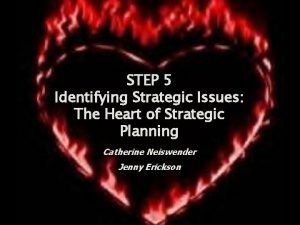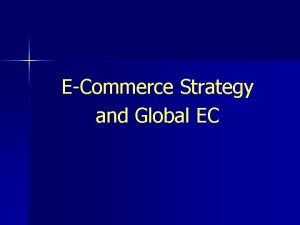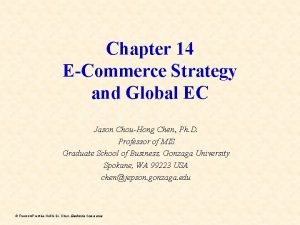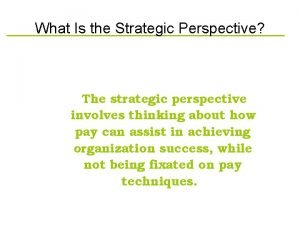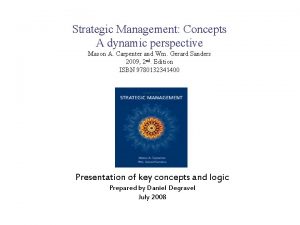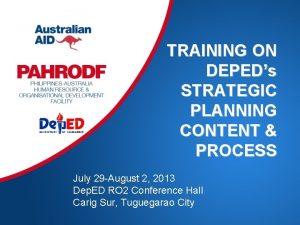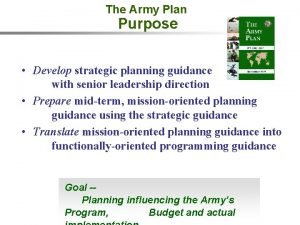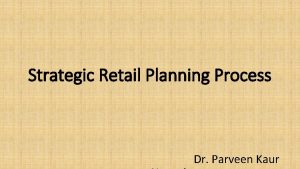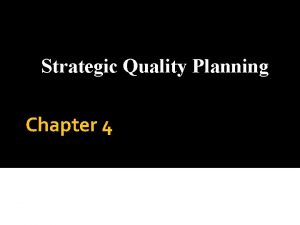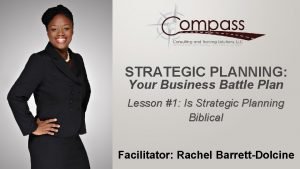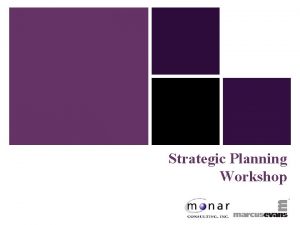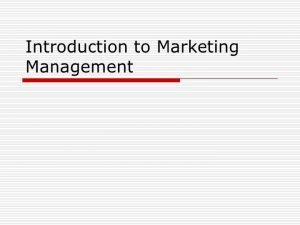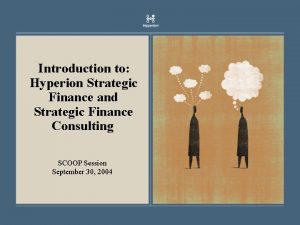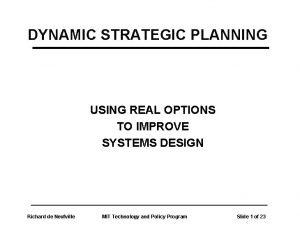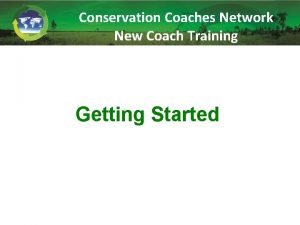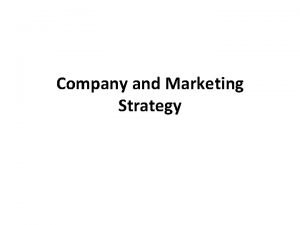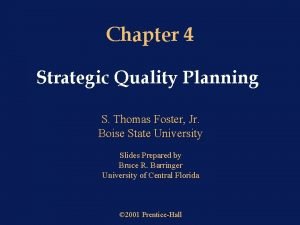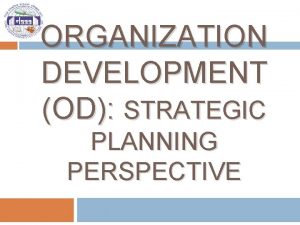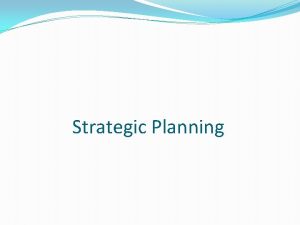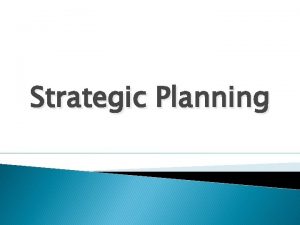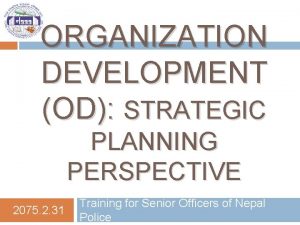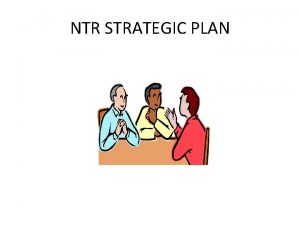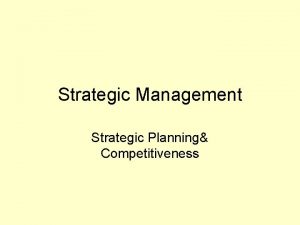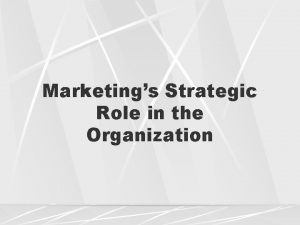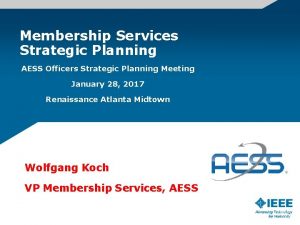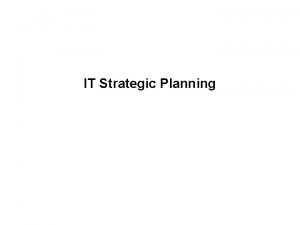ORGANIZATION DEVELOPMENT OD STRATEGIC PLANNING PERSPECTIVE Perspective on





























- Slides: 29

ORGANIZATION DEVELOPMENT (OD): STRATEGIC PLANNING PERSPECTIVE

Perspective on Change 2

Change in an Organization People Structure Technolo gy

People 4 How are people (staff) regarded in the organization? How the organization created awareness among people for change? How are they involved in the change processes? What incentives are designed for enhancing employee commitments? How people behave with fellow members

Structure 5 How are the major functions organized? How are the workflow processes designed? How is reporting relationships established?

Technology 6 What is the basic technology applied in managing core functions of the organization? What is rate of technology adaptation and innovation for organizational transformation? How information technology is employed? Both software and hardware?

Learning excursion 7 Visit to o Lalitpur District Court o Buddha Air Observation and Interaction with concerned officials Developing perspective on transformation of public and private sector organization Learning reflection in the plenary

Learning reflection 8 Brief presentation based on groups’ observation and learning

Strategic thinking 9 Strategic thinking is the mental or thinking process applied by an individual to achieve the goals Strategic thinking (skill of generating high value analysis, longer term and broad perspective) and management is important

Strategic Thinking 10

Organization Development (OD) 11 Process of increasing organizational effectiveness and facilitating personal and organizational change through the use of interventions driven by social and behavioral science knowledge, research and technology. OD is a planned activities which effects entire organization, requires support from all levels and improves organizational effectiveness and health.

12

Needs Assessment 13 A systematic exploration of the way things are and the way they should be. These "things" are usually associated with organizational and/or individual performance. Internal and External level analysis is required for identifying real development needs

Form of Needs Normative o Defined as falling below a standard criterion established by custom, authority, or general consensus. Relative o Measured by the gap between the level of service between similar communities

Forms of Needs Expressed o Defined in terms of the number of people who actually have sought help Perceived o Defined in terms of what people think their needs are or feel their needs to be

Considerations in assessment 16 Public service value chain Longer term perspective Degree of inter-dependencies among agencies Degree of formalization and work processes, regulations Result orientation Sustaining value

17 The problem: We are busy !

OD interventions To intervene is to enter into an ongoing system of relationships to come between or among persons, groups, or objects for the purpose of helping them. Planned activities set of actions designed to introduce changes in organization for improving its


Individual level intervention Life and Career Planning activities Education and Training Mentoring, Coaching and Counseling T-group (Sensitivity training) Job redesign Behavior modeling Reflection Individual goal setting / 360 degree feedback Performance appraisal Leadership development Values Clarification and Value Integration Conflict Management Action Learning Self-Awareness Tools

Team level interventions Team building: task / process directed Interdependency exercise Appreciative inquiry Responsibility charting Role analysis technique Decision making, problem solving, planning, goal setting in team Conflict management/ Confrontation meeting Job enrichment Management By Objective Appreciations and concerns exercise Visioning Quality of work life programmes Quality circles Force field analysis Self managed teams Process consultation

Organization level interventions Socio-technical systems Management By Objective Cultural analysis Confrontation meetings Visioning Strategic planning Performance management Employee wellness / Reward system Diversity management Interdependency exercise Survey feedback Appreciative inquiry Quality Work Life programmes Total Quality Management Physical settings Large scale systems change Succession planning Structural changes / Restructuring: Right sizing,

Change and People 23 People change not organizations. Change occurs when individual change matches the stages of organizational change. But there is overemphasis on process of change rather than people affected by that change and that led for failure rate of organization change to the large extent.

Managing CHAGE C • Create Tension H • Harness Support A • Articulate Goals N • Nominate Roles G • Grow Capabilities E • Entrench Change

Factors in Managing Change 25 Six Components are essential for successful change 1. Vision 2. Skills 3. Incentives 4. Resources 5. Action Plans 6. Results

What happens when there is NO… 26 Vision: Confusion Skills: Anxiety Incentives: Resistance Resources: Frustration Action Plan: Treadmill Results: Inertia

Change and Commitments

Concluding thought “The secret of change is to focus all of your energy not on fighting the old but on building the new” - Socrates

Discussion/Feedback basanta. sigdel@nasc. org. np pratibha. dhungana@nasc. org. np
 Strategic planning vs tactical planning
Strategic planning vs tactical planning Strategic fit vs strategic intent
Strategic fit vs strategic intent Strategic complements definition
Strategic complements definition Strategic management and strategic competitiveness
Strategic management and strategic competitiveness Strategic analysis and choice in strategic management
Strategic analysis and choice in strategic management Identifying strategic issues facing the organization
Identifying strategic issues facing the organization Strategic organization speech
Strategic organization speech What is the strategic value of ec to the organization?
What is the strategic value of ec to the organization? What is the strategic value of ec to the organization?
What is the strategic value of ec to the organization? Process organization in computer organization
Process organization in computer organization Point by point organization
Point by point organization Strategic perspective of pay
Strategic perspective of pay Fighting means corporations
Fighting means corporations Corporate strategy meaning
Corporate strategy meaning Spatres
Spatres Army strategic planning guidance
Army strategic planning guidance Identify strategic opportunities in retailing
Identify strategic opportunities in retailing Strategic quality planning process
Strategic quality planning process Is strategic planning biblical
Is strategic planning biblical Strategic planning workshop exercises
Strategic planning workshop exercises Marketing plan process
Marketing plan process Global retailing strategies
Global retailing strategies Swat strategic planning
Swat strategic planning Hyperion strategic finance demo
Hyperion strategic finance demo Global product planning: strategic alternatives
Global product planning: strategic alternatives E marketing strategic planning
E marketing strategic planning Dynamic strategic planning
Dynamic strategic planning Strategic conservation planning
Strategic conservation planning Company wide strategic planning examples
Company wide strategic planning examples Lundvall-juran quality cost model
Lundvall-juran quality cost model





